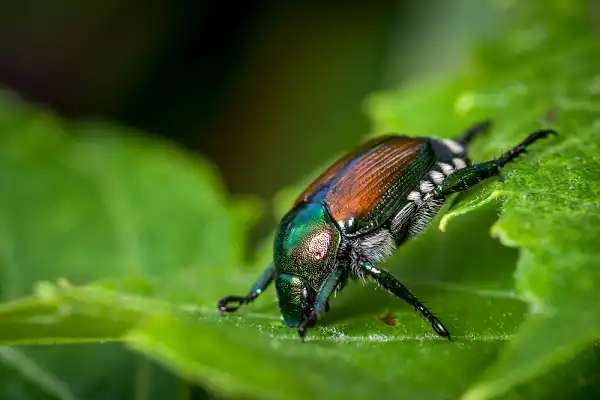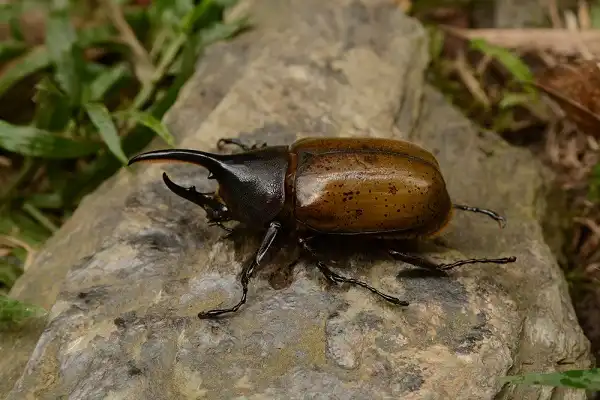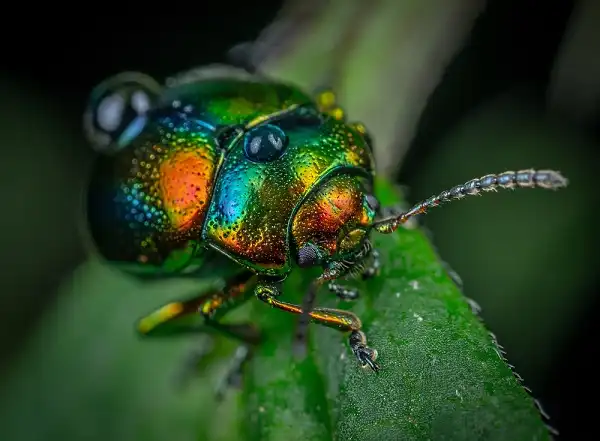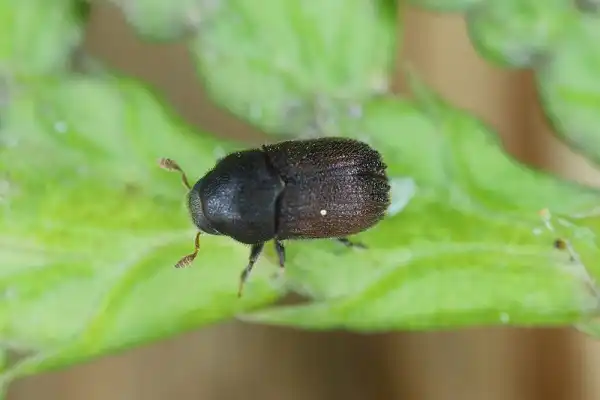If you’ve ever found a beetle in your home, you know that the sight of its shiny outer layer and six legs can be captivating. This ancient creature has been around for hundreds of millions of years, although it’s often overlooked and misunderstood. In this post, we’ll examine why these creatures are important to our ecosystems and take a closer look at their fascinating lives. Discover why beetles may be some of the most successful species on Earth!

Beetle Description
Beetles are among the most recognizable and diverse creatures on Earth. They come in a huge variety of shapes, sizes, and colors, with some species featuring bright metallic hues while others exhibit dull earthy tones. Most beetles have hard exoskeletons with segmented bodies made up of three components: the head, thorax, and abdomen. Their heads feature two large compound eyes and two antennae used to smell and feel their environment. Many beetles also have powerful mandibles that they use for biting and chewing food. Beetles typically have six legs, although some species may have fewer or more depending on their lifestyle. Their legs are designed for crawling but can also be used for gripping branches or objects within their environment. Some beetle species can even use their legs to swim! Beetles often have wings as well. These wings help them fly from place to place in search of food or shelter, and some species use them to mate as well.
Beetle Habitat
Beetles can be found in a variety of habitats around the world, from deserts to rainforests and everywhere in between. They often seek out places where food and shelter are plentiful, such as wooded areas or dead trees. Some species prefer wetter climates, while others prefer dryer conditions. Beetles also inhabit mountains, grasslands, and agricultural areas. The type of habitat a beetle chooses depends on its particular lifestyle and diet needs; some feed on plants, while others eat insects or even fungi. Different species have different temperature ranges they can tolerate as well; the tropical beetles may not survive cold winter temperatures, while temperate zone beetles may struggle to survive hot desert climates. Beetles help regulate the climate by providing shade for other organisms and consuming decaying material that would otherwise release harmful gases into the atmosphere.
Beetle Diet
Beetles have an incredibly diverse diet that varies significantly from species to species. Most beetles feed on plants, fungi, dead animals, and other organic material but some species are predators or parasites. Plant-feeding beetles consume leaves, flowers, stems, bark, roots, and fruits while others feed on decaying wood and plant matter. Fungi-eating beetles feed on the spores of mushrooms and other fungi as well as decaying organic material. Predatory beetles are carnivorous hunters that capture and eat insects such as caterpillars, grubs, and aphids. Parasitic beetles live inside or on their hosts and feed off their blood or bodily fluids. No matter what they consume, all beetles rely heavily on moisture for energy so they tend to stay close to sources of water. Some beetle species can even store water in special reservoirs in their bodies to help them survive long periods of drought. As scavengers, they often play a critical role in recycling nutrients within their ecosystems by breaking down decaying matter into usable material for other organisms.

Beetle Size
Beetles are incredibly diverse in size, ranging from as small as a grain of sand to as large as a human hand. The smallest species is the feathering beetle, which measures just 0.25mm in length and weighs less than a milligram! On the opposite end of the spectrum, some of the largest beetles measure up to 4 inches long and weigh up to 3 ounces. Not only do larger species require more food than smaller ones, but some bigger beetles can also cause considerable damage to crops or forests due to their voracious appetite for plant matter. Also, many larger species possess horns on their head or thorax that they use for protection against predators and rivals during mating season.
Beetle Lifespan
The lifespan of a beetle varies greatly depending on the species and its environment. Some species may only live for a few weeks or months, while others can survive for years. Generally, most species live between 2 and 5 years in the wild. In captivity, however, beetles can live much longer due to a more stable environment and controlled diet. For example, the goliath beetle has been known to live up to 10 years in captivity with proper care. Furthermore, some species are even known to enter a state of diapause—a type of hibernation that helps them survive during periods of drought or cold weather—which can extend their life expectancy significantly. Beetles go through four stages of life: egg, larva, pupa, and adult. The length of each stage depends on the temperature and humidity within their environment; warmer temperatures tend to speed up development while cooler temperatures slow it down. The egg stage usually lasts anywhere from two weeks to several months depending on the conditions; the larval stage can last anywhere from several weeks to several years; and the pupal stage typically takes around two weeks to reach adulthood.
Beetle Behavior
Beetle behavior is largely dictated by their environment and the species they belong to. Most species are solitary, meaning they will live and feed alone unless mating or rearing young. They also tend to have a hierarchical system where the largest males claim dominance over a certain area and will fight off intruders of the same species. Some beetle species also exhibit cooperative behaviors such as “herding,” where individuals work together to locate food sources or defend their territory against predators. Beetles also communicate with one another through various means such as pheromones, visual signals, sound, or even touch. Pheromones may be used for both mating rituals as well as for signaling danger or warning off other potential mates from an area. Visual signals include changes in coloration that can show aggression or submission depending on the situation; many species also flash colored patterns on their wings which can be seen at night in some cases. Finally, some beetles produce sound via stridulation—the rubbing together of two body parts—which is often used during courtship displays or aggressive encounters between males.

Beetle Speed
Beetle speed can vary widely among species and even individual specimens. Most species are capable of walking or running quite quickly when necessary, but some species can fly at amazing speeds. Ground beetles, for instance, can reach up to 6 inches per second when running. Meanwhile, smaller beetles such as flea beetles can jump up to 4 times their body length in a single bound! Flying beetle species such as the Hercules beetle are known to reach speeds of up to 30 miles per hour in flight. Some of the fastest flying beetles are the jewel scarab and the spectacular tiger beetle which have been clocked at over 40 mph during flight! The swiftest water beetles known belong to the genus Dytiscus, and they have been recorded swimming at speeds of nearly 8 inches per second. On land, some of the swiftest beetles include ground beetles that can run at around 1 meter per second—or roughly 2 ½ miles per hour—for short distances before needing to take a break.
Beetle Species
Beetles are the largest order of insects, consisting of over 350,000 species that are found all over the world. They come in a variety of colors and sizes, ranging from the tiny flea beetle to the imposing goliath beetle. Each species is adapted to its particular environment, offering an incredible insight into evolutionary adaptation. One of the most popular beetle species is the scarab beetle, which was highly significant in ancient Egyptian culture. Scarab beetles come in many forms and colors, including those with metallic green backs and jewel-like iridescent hues.
There are also rhinoceros beetles, which can be identified by their impressive horns and large size; they are often kept as pets due to their gentle nature. Other notable beetle species include ground beetles, darkling beetles, click beetles, and stag beetles—all of which have unique characteristics that make them stand out. Ground beetles possess long legs and sleek bodies for rapid movement across the ground; darkling beetles feature a hardy exoskeleton with distinct ridges running along their shells; click beetles produce a distinctive “clicking” sound when they jump; while stag beetles have oversized mandibles suitable for grinding up material such as wood or decaying organic matter.
Beetle Hunting
Beetle hunting is an age-old pursuit, as humans have been using these insects for food, materials, and medicinal purposes since ancient times. As a result of this interaction, numerous species of beetles have become specialized in finding and exploiting different resources. For instance, some beetles such as fireflies are known to hunt for prey at night; while others such as dung beetles can detect food sources by smell. Modern beetle hunting is largely focused on collecting specimens for scientific research or simply for hobbyists seeking to observe rare or interesting species up close. Beetle hunters often use special traps or netting to capture their quarry or simply search for them in their habitats. In addition to physical searching, they may also employ various lures such as pheromones or sweet scents to attract specific species. Once the desired specimen has been acquired, it can be properly identified and documented for further study.

Conclusion
Beetles are an incredibly diverse and fascinating species of insects that have adapted to practically every type of environment on Earth. Thanks to their hardy exoskeletons, they come in a variety of shapes, sizes, and colors. They also possess the remarkable ability to fly or run at incredible speeds—or even jump long distances—in order to capture prey or evade predators. Beetles play an important role in maintaining balance within ecosystems by providing food for other organisms as well as breaking down dead animals and other organic material. Furthermore, beetle hunting has been practiced since ancient times both for sustenance and scientific research; however modern collectors must be careful not to cause too much disruption when out in the field.
Frequently Asked Question

